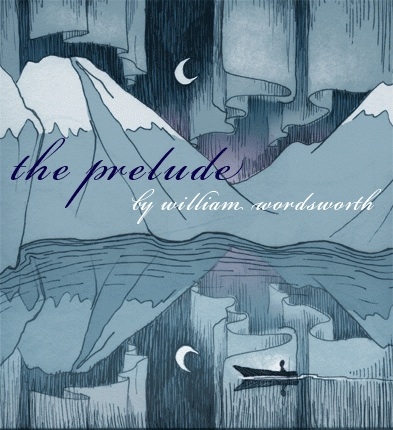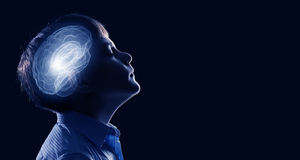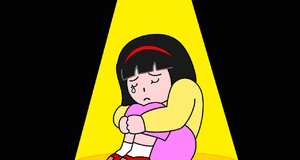Wordsworth's Prescient Baby: Conceptions of the Mother-Infant Relationship in the Development of the Self (1790s-1890s)
By
2014, Vol. 6 No. 03 | pg. 1/4 | »
IN THIS ARTICLE
KEYWORDS
This dissertation explores late eighteenth and nineteenth century views of the mother-infant1 relationship and how they reveal conceptions of the self. I investigate historical changes in the understanding of infantile development, primarily through British baby diaries and childcare advice literature. In two cases examine French authors whose work was translated into English and widely read by an Anglophone audience.2 First I consider William Wordsworth’s model of infantile development in his 1799 poem The Prelude and briefly look at Locke and David Hartley’s theories of the intellectual development of the mind. I will then consider the prevailing ideas from childcare literature and baby diaries from the late eighteenth century until the 1820s. Next I explore the changing conceptions of the mother-infant relationship in the childcare advice boom of the 1830s. Finally, I survey the Child Study Movement’s different approach towards infantile development at the end of the 1800s. 
Illustrated cover to William Wordsworth's The Prelude, My central argument is that by the 1830s the mother-infant relationship was considered emotionally formative, with most people considering the love of the mother as vital to the development and formation of the self. However this self was a moral self, whereas Wordsworth and two lesser known thinkers in the 1830s were unusually prescient in their understanding of the importance of very early emotional experiences in the growth of intellect and imaginative life. I focus on the late seventeenth and eighteenth centuries because it was in 1799 that the Romantic poet William Wordsworth (1770-1850) finished his first version of The Two-Part Prelude, eventually published in 1850 as The Prelude or, Growth of a Poet's Mind; An Autobiographical Poem. In Book Two of the poem Wordsworth describes a baby’s early encounters with his mother and the natural world, producing a highly original and sophisticated model of an infant’s mind and its mental development. As I elaborate further in the next chapter, Wordsworth took a conjectural leap into the twentieth century with regards to his understanding of the mother-infant relationship and its influence on the development of the emergent self. For this reason I investigate Wordsworth’s foresight in relation to his contemporaries and later generations.It is therefore important to provide an overview of the historical conceptions of the mind and self that influenced Wordsworth’s generation and those to follow. Many ideas of childhood and selfhood in the seventeenth and mid-eighteenth centuries continued to provide a foundation for the writers of baby diaries and childcare books in the late eighteenth and nineteenth centuries. The Intellectual Legacy of Locke and HartleyJohn Locke (1631-1704) was hugely influential in his conception of the self and its development from the seventeenth century onwards. In An Essay Concerning Human Understanding (1690) Locke proposed the new-borns mind to be like ‘white paper, void of all characters, without ideas.’3 By rejecting the existence of innate ideas, man’s mind was therefore ‘furnished’ through experience.4 The idea that we entered the world as ‘Tabula Rasa’ or ‘blank slates’ meant that the infant was shaped by external conditions alone.5 The rejection of ideas such as original sin or any inherent moral qualities meant the experiences of the infant were of primary importance to the formation of the self. Early childhood came to be recognised as an important period for the creation of the later adult. Another philosopher, David Hartley (1705-1757) expanded on Locke’s theories of ‘tabula rasa’ and assimilation of experience in his doctrine of associations. According to Associationism experience is accumulated through sensual perception of external objects. This meant all ideas, feelings and passions have their origins in experience of the external world. Furthermore Hartley believed that affect had its origins in ideas, so emotion follows secondarily from cognitive processes.6 By the time he was writing The Prelude, Wordsworth had dismissed such an empiricist view of the mind as ‘murder to dissect’, when ‘each most obvious and particular thought…hath no beginning.’7 As we shall see in relation to mental development, Wordsworth rejected the belief that the inner world was made up of neat moments of traceable external experience. As the psychoanalyst Ron Britton notes, both Wordsworth and fellow poet Samuel Coleridge came to feel ‘that the empirical school of philosophy, with its assembly of a filing cabinet of sensory experiences as a picture of the mind, annihilated man’s sense of himself.’8 We shall see that Wordsworth, unlike Locke and Hartley had the notion of a dynamic internal world in infancy and adulthood rooted in interpersonal relations. Wordsworth's Model of the Development of the Self in InfancyI will spend some time elaborating on Wordsworth’s model as it is central to my later findings. Known now as the ‘Infant Babe Passage’, Wordsworth opens with the lines ‘Blessed the infant babe/For with my best conjectures I would trace/ The progress of our being’ (Prelude line 267-270) [For the full passage see Appendix 1]. From here onwards Wordsworth gives an account of infantile experience in subjective terms. The passage describes a model of mental development, beginning with a description of the infant’s attachment to the mother, the extension of this attachment to the external world, and the infant’s founding of an internal world. I have chosen to look at the 1799 version of the poem as opposed to the more widely known 1805 edition because of its more detailed examination of mental development. Wordsworth firstly describes how the mother-infant relationship is necessarily formative and natural to the development of the self. ‘Upon his mother’s breast’ the infant ‘who, when his soul/ Claims manifest kindred with an earthly soul,/ Doth gather passion from his mother’s eye.’ (271-273). From birth Wordsworth suggests the infant is biologically driven to seek a loving relationship with its mother or primary caregiver. The infant absorbs or internalises the mother’s loving feelings, which become a source of comfort and strength in the infant’s own mind: ‘Such feelings pass into his torpid life/ Like an awakening breeze’ (274-275). These experiences inspire the infant’s enthusiasm for the outside world. 9 The qualities of the loving mother then suffuse all external objects where ‘From this beloved presence- there exists/ A virtue which irradiates and exalts/ All objects through all intercourse of sense’ (288-290). Therefore, the infant begins to cultivate a bond with the external world: ‘Along his infant veins are interfused/ The gravitation and the filial bond/ Of Nature that connect him with the world’ (292-294). Here we are told the infant begins to gain a sense of living inside a world that is a part of him and of which he is also a part.10 In such an auspicious environment the infant’s mind expands: -Thus day by day Wordsworth states that the capacity to love invigorates and fuels the capacity to think. This is in direct opposition to Hartley’s understanding that cognition precedes feeling. In Observations on Man (1749) Hartley claims ‘Our passions or affections can be no more than aggregates of simple ideas united by association.’11 Significantly Hartley does not recognise the mother or primary carers love as the essential precursor of intellect or the essential foundation for a sense of self. Britton has pointed out Wordsworth’s remarkable prescience in his understanding of infantile development. He argues that for Wordsworth ‘no eighteenth century philosophical theory is adequate for his purposes’. 12 Instead he shares much more in common with twentieth century ‘psychoanalytic writers such as Klein (1952), Balint (1952) and Winnicott (1945) [who] sought explanations for adult psychological developments in early infancy’.13 Indeed Wordsworth implicitly echoes Melanie Klein’s ideas of projection and introjections explained in her essay ‘Some Theoretical Conclusions regarding the Emotional Life of the Infant’ (1952). By projection, Klein means the attributive projection of one’s internal world onto external objects. Introjection describes the process of internalising the qualities of the external object into the internal world. The infant: ‘From Nature largely he receives, nor so/ Is satisfied, but largely gives again;/ For feeling has to him imparted strength.’ (297-299). So the baby, allowed to feel freely then animates the external world with significance and meaning. Through repeatedly projecting and introjecting, the infant creates an external world of significance and an internal world of substance.14 The infant ‘Creates, creator and receiver both’ (303). The mother’s first tender feelings are therefore crucial to healthy development. Wordsworth’s theoretical model makes the claim that infants who are able to engage with nature and their internal world display a particular capacity for imagination and creativity. ‘Such, verily,’ thinks Wordsworth, ‘is the first/ Poetic spirit of our human life’ (305-306). The importance of ‘the discipline of love’ in Wordsworth’s ideas also resemble those of many twentieth century child psychologists and attachment theorists.15 In Child Care and the Growth of Love (1953) Bowlby writes that ‘Mother-love in infancy is as important for mental health as are proteins and vitamins for physical health....what occurs in the earliest months and years of life can have deep and long-lasting effects.’16 His findings on the adverse impact of maternal deprivation sadly resonate with Wordsworth’s own experiences. In Book Five of The Prelude: ‘Early died/ My honoured mother, she who was the heart/ And hinge of all our learnings and our loves;/ She left us destitute, and as we might/ Trooping together’ (Book V 256-260). 17 But with proper maternal care, the infant is ‘No outcast he, bewildered and depressed’. (291) In Wordsworth’s earlier poem, ‘The Mad Mother’18 (Lyrical Ballads 1798) he skilfully imagines the destructive relationship between a deranged mother and her child. Wordsworth’s assertion of a subjective self forged during infancy is also iterated in Daniel Stern’s The Interpersonal World of the Infant (1985). Stern observes that ‘during the first two months the infant is actively forming a sense of an emergent self’ and ‘pervasive feelings of interconnectedness and inter-personal well-being do occur from this period from two to seven months, these feelings serve as an emotional reservoir of human connectedness.’19 Nowadays we are so accustomed to accepting the formative nature of the mother-child relationship, that it seems obvious that the baby is ‘Subjected to the discipline of love’.20 It is in the light of Wordsworth’s remarkable insights that I want to investigate baby diaries and childcare literature to see how typical his understanding was. Jonathan Wordsworth, academic and descendent of the poet claims ‘Wordsworth the infant psychologist is surely 100 years ahead of time’.21 I will show in the next chapter that Wordsworth did indeed demonstrate incredible foresight, but by the 1830s some ideas began to emerge independently that to some extent shared a common conceptual world.Continued on Next Page » Suggested Reading from Inquiries Journal
Inquiries Journal provides undergraduate and graduate students around the world a platform for the wide dissemination of academic work over a range of core disciplines. Representing the work of students from hundreds of institutions around the globe, Inquiries Journal's large database of academic articles is completely free. Learn more | Blog | Submit Latest in History |


















